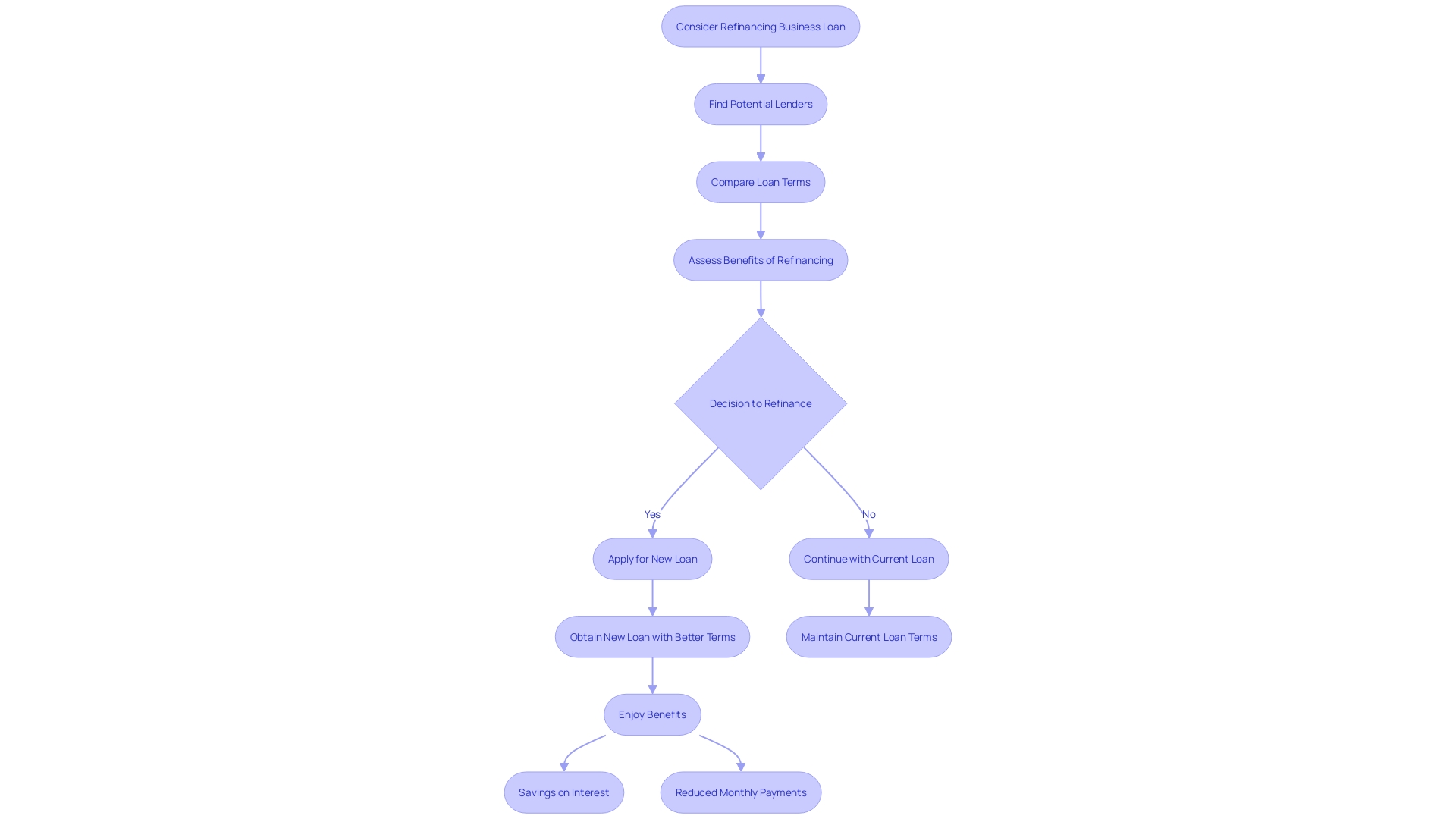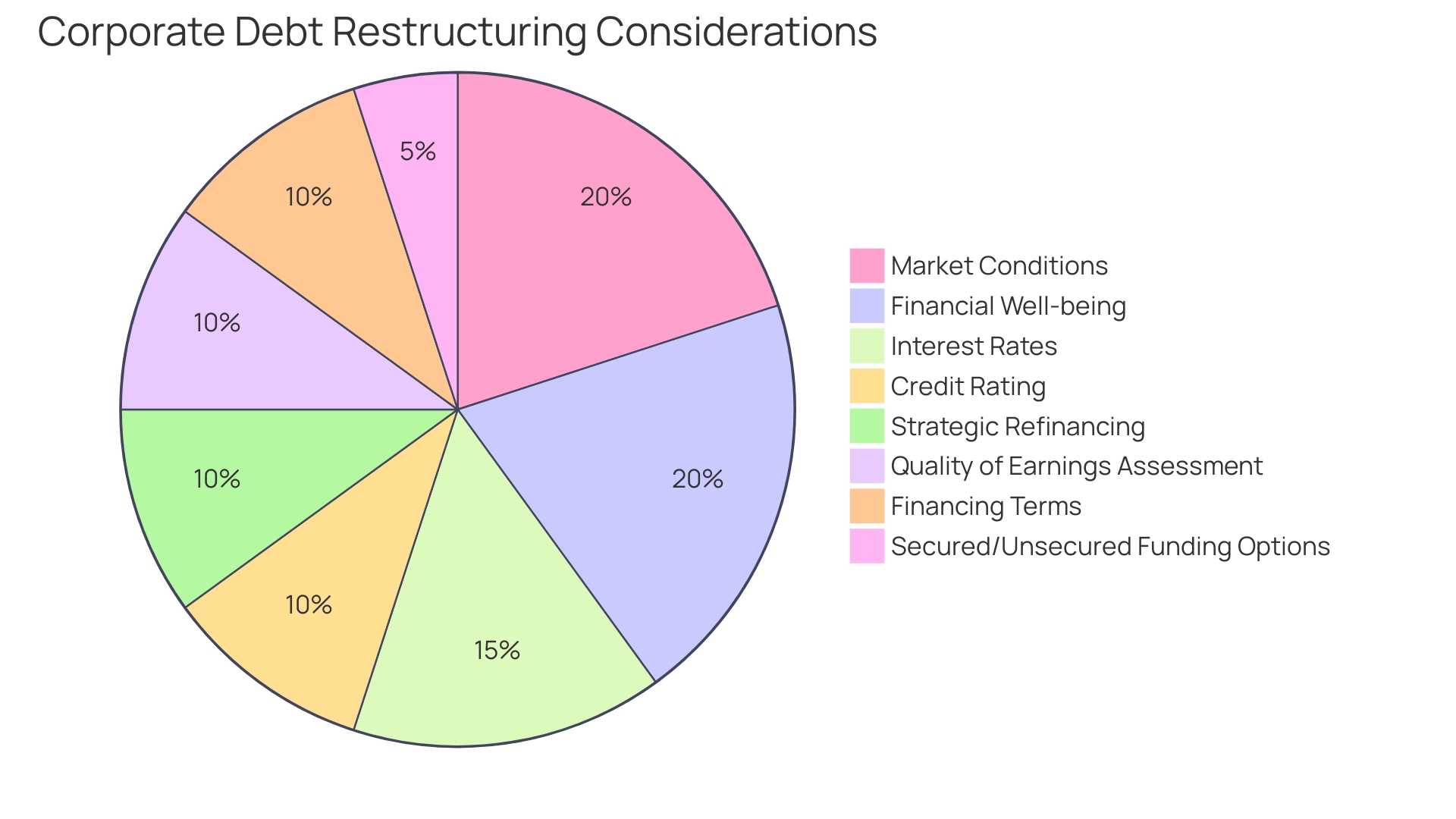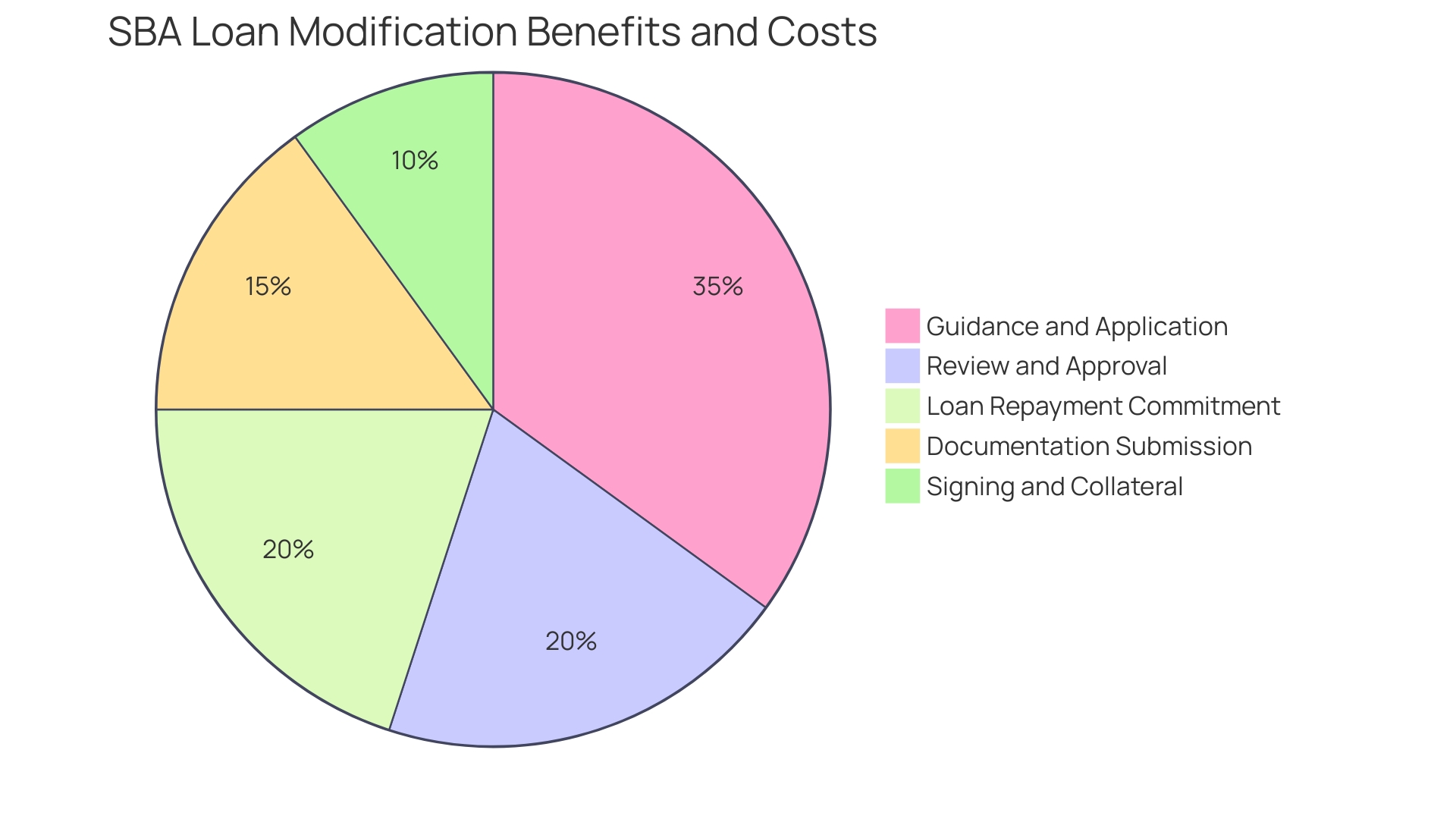Introduction
Refinancing a business loan can be a strategic move that offers numerous financial benefits. By obtaining a new loan with more favorable terms, such as lower interest rates or extended repayment periods, businesses can experience significant savings and enhance their fiscal health. Whether it's to inject new life into a startup or manage growth more sustainably, loan refinancing is a critical component of a savvy financial management strategy.
In this article, we will explore the reasons to refinance a business loan, when to consider refinancing, types of loans that can be refinanced, steps to take when refinancing, considerations for refinancing an SBA loan, the pros and cons of business loan refinancing, and common mistakes to avoid. By understanding these key aspects, businesses can make informed decisions to optimize their financial state and support their growth and operational needs.
What Is Business Loan Refinancing?
Refinancing your business loan is a strategic move that involves obtaining a new loan to replace an existing one, ideally offering more favorable terms. This maneuver can be particularly beneficial as it may lead to significant savings on interest, a reduction in monthly payments, or both, enhancing your company's fiscal health. A successful strategy for changing the terms of your loan often depends on finding a lender that can offer better conditions than your current agreement, allowing you to pay off the original debt. This strategy is not only about immediate relief but also aligns with long-term economic optimization, which is essential for enterprises seeking to prosper amid competitive challenges and evolving market demands. Whether it's to infuse new energy into a startup or handle growth more sustainably, refinancing can be a crucial element of a savvy money management strategy.

Why Refinance a Business Loan?
Refinancing your company's financial advance could be a strategic maneuver for numerous monetary advantages. In scenarios where market interest rates have dipped since you secured your initial financing, you can refinance to capture these lower rates, potentially carving out substantial savings across the financing's life. Furthermore, modifying your borrowing agreement to prolong its duration can decrease monthly repayments, which in effect improves cash flow management—an essential element for small enterprises maneuvering operational expenses. Another benefit is the merging of different debts into one, simplifying your money management and potentially obtaining improved conditions. As the lending landscape evolves, with recent reports indicating a potential stabilization in lending for 2024 and an optimistic credit outlook by bank economists, small enterprises might find more favorable conditions for loan restructuring. Keep in mind, every monetary choice should be supported by careful examination and comprehension of your company's distinct requirements and fiscal well-being.
When to Refinance a Business Loan
Considerations for corporate debt restructuring often involve assessing the current market conditions and the financial well-being of the company. When interest rates are decreasing, it presents an opportunity for companies to refinance existing debts and benefit from reduced interest expenses. A significant enhancement in a company's credit rating can also serve as a trigger for loan modification, potentially resulting in more advantageous conditions and rates of interest, which could enhance cash flow and decrease the expense of capital.
Additionally, strategic refinancing can be crucial for businesses experiencing significant shifts, such as operational expansion or a change in monetary requirements. For instance, Commerce Bank leveraged a 'super community bank' model to adapt to the evolving competitive landscape, marked by the rise of digital solutions and fintechs. By modernizing their core banking platform, they maintained a customer-centric approach while managing technical debt, illustrating how organizations can restructure their strategies to accommodate growth and changing market conditions.
A Quality of Earnings (QoE) assessment plays a significant role in this process by providing a meticulous review of a company's financial health and earning quality, including revenue and cost analysis. This ensures that the financials are sustainable and that risks are well understood, which is crucial when considering refinancing or restructuring debt.
In the wider framework of commercial lending, it is crucial to acknowledge that financing comes with particular terms and conditions, encompassing the repayment duration and interest rates. Secured and unsecured funding options serve different purposes, and the decision between them can impact the overall economic strategy of a company. Comprehending the complexities of these economic products and the prerequisites for obtaining them, like a favorable credit rating and stable company income, is crucial for making knowledgeable choices about debt reorganization and reformation.

Types of Business Loans That Can Be Refinanced
When it comes to refinancing business debt, not every financial arrangement is created equal, but a variety of them are indeed eligible for this financial strategy. For example, term financing, which involves a prearranged repayment plan, can frequently be refinanced to obtain more favorable conditions. This can be especially advantageous if your current term credit carries high interest rates or terms that are no longer competitive.
Similarly, lines of credit, which provide flexible access to funds up to a certain limit, can be refinanced to negotiate lower interest rates or increase the available credit limit, thus improving your financial flexibility.
Moreover, Small Business Administration (SBA) financing, which is partially backed by the government and provides favorable conditions to small businesses, can also be refinanced. If the terms of your SBA loan, such as interest rates, are not as favorable as current market offerings, exploring other financial options could provide an opportunity to improve these terms.
It's important to comprehend that regardless of whether a loan is secured or unsecured, with set repayment periods and terms, alternative financing options may be available. Approval often requires a strong credit score, consistent revenue, and sometimes a personal guarantee or collateral. With a range of lending institutions, such as banks, credit unions, and online lenders, entrepreneurs have multiple avenues through which they can pursue loan restructuring.
As enterprises develop, the necessity for restructuring financial arrangements can become evident, whether it is to decrease expenses, prolong repayment periods, or simply capitalize on more favorable market circumstances. By comprehending the mechanics of small enterprise financing and the various funding options that can be restructured, entrepreneurs can make well-informed choices to bolster their expansion and operational requirements.
Steps to Refinance a Business Loan
Starting the process of restructuring a business debt is a strategic decision for small enterprises aiming to improve their financial status. To guarantee a seamless shift and accomplish your objectives for altering your current financial arrangement, start by analyzing your ongoing credit. Obtain a thorough understanding of your loan balance, interest rates, and the terms of repayment, including any fees associated with early payment. Evaluate the economic position of your company to determine if restructuring aligns with your financial plan.
As you consider restructuring, clarify your goals. Whether you aim to diminish your monthly outlays, secure a more favorable interest rate, or consolidate your debts, setting concrete targets is imperative. Based on these goals, decide on the terms and interest rates that are acceptable for your business's future.
To proceed, it's crucial to confirm your eligibility for refinancing. Review your creditworthiness by checking your credit score and history. Get ready to showcase thorough records of your finances to potential lenders, such as tax documents, statements, and bank records.
In preparation for lender engagement, amass all necessary documents. This includes your enterprise strategy and any financial documentation that lenders may require to evaluate your application.
Exploring the lending landscape is your next move. Research different lenders, comparing terms, interest rates, and the flexibility of repayment options. An extensive range of lenders exists, from conventional banking institutions to online lending platforms and credit unions, all providing diverse terms to cater to various needs.
When ready, submit your application to the chosen lender with all required documentation. Be prepared for additional inquiries and thorough scrutiny of your application. After receiving a financial proposal, carefully examine the contract to fully understand the responsibilities and conditions before completing the borrowing process.
By conducting thorough analysis and strategic preparation, navigating the intricacies of business debt restructuring can result in a more sustainable financial framework, aligning with the growth path and long-term financial goals of your small business.
Considerations for Refinancing an SBA Loan
When contemplating the modification of an SBA funding, it is vital to investigate the particular requirements and conditions that the Small Business Administration imposes. One should evaluate the possible benefits, such as decreased interest rates or more favorable conditions, compared to any potential costs or fees that may arise throughout the process of evaluating and adjusting the loan. It's also important to consider how the process of restructuring might impact any collateral or personal assurances previously in place. Consulting with an experienced advisor or accountant is recommended to ensure that your choice to refinance an SBA lending solution aligns with your broader business aspirations.
Businesses must navigate the path of refinancing with a clear understanding of the effects on their monetary well-being and operational stability. For example, Reidsville, a community in North Carolina, experienced a significant shift when the Lucky Strike cigarette company closed its doors, impacting the local economy. Similarly, during the COVID-19 pandemic, the SBA intervened to provide crucial support through PPP funding, emphasizing the significance of strategic financial planning in turbulent times.
Securing funding for a small enterprise necessitates a strong credit score, robust business revenue, and often, a personal guarantee or collateral. The landscape of potential lenders is diverse, including online platforms, banks, credit unions, and peer-to-peer lending sites. Each lending option comes with its own set of qualifications, borrowing amounts, and repayment terms. Comprehending these elements is crucial for enterprises at the brink of launching or expanding, as the proper financing can be the catalyst for achieving their objectives.
Furthermore, businesses need to be cognizant of the market worth of their assets, as observed in the instance of a refinance assessment, which has a crucial function in the underwriting procedure for fresh financing. Lenders use appraisals to assess the market value of a property, ensuring it is sufficient to support the new financial agreement, reflecting the lender's requirement to comprehend property maintenance and neighborhood values.
In the changing economic environment, criteria for approval of loans to both big and medium-sized companies, as well as small companies, have undergone modifications. Factors such as the deterioration in credit quality of various loan categories and concerns about deposit outflows or declines in market value of fixed-income assets can influence these standards. Epiq Bankruptcy's data service exemplifies the need for on-demand access to dynamic bankruptcy data, highlighting the importance of informed decision-making in financial restructuring and bankruptcy matters.

Pros and Cons of Business Loan Refinancing
When considering the improvement of your business debt, understanding the nuances of debt restructuring is critical. Lowering interest rates through refinancing can trim down the total interest expense, hence beneficial for long-term savings. It also may bolster cash flow, allowing for more breathing room in operational budgeting due to potentially reduced monthly payments or extended financing terms. Moreover, combining several debts into a single loan streamlines the repayment strategy, making it less burdensome to handle obligations.
However, it's not without its caveats. Refinancing might come with various costs and fees that can add up, such as origination or appraisal fees, and in some cases, prepayment penalties that need to be factored into the overall financial assessment. There's a possibility of a short-term dip in your credit score when applying for refinancing, but with judicious management, this can transition into a positive credit impact over time. One must also be cautious about giving up any advantageous conditions from existing borrowing, which might include unique characteristics like low-interest rates or adaptable repayment schemes. Before proceeding, it is essential to weigh these potential trade-offs against the benefits.
When considering small business loans, whether they are secured with collateral or unsecured, the decision relies on different factors such as the purpose of the funding, your business's financial condition, and your risk tolerance. For asset-heavy investments, a secured financing option might make more sense, potentially offering lower interest rates. On the other hand, unsecured financing options may be more appropriate for general operational needs, albeit typically with higher interest rates.
Reputation and transparency of lenders are paramount. It's advisable to review lender history, customer feedback, and the details of the loan agreement thoroughly to avoid any future strains. Comprehending the complete range of borrowing expenses and repayment conditions is crucial for making an educated choice that aligns with your enterprise's strategic monetary objectives. By taking into account these diverse aspects, you can navigate the intricacies of debt restructuring with assurance, ensuring it aligns with your company's trajectory and fiscal well-being.
Common Mistakes to Avoid When Refinancing
Restructuring your loan can offer a pathway to improved financial well-being for your enterprise, but it's a procedure filled with possibly expensive traps. To navigate this terrain successfully, consider the following missteps to avoid:
-
Comparison Shopping: Limiting your search for refinancing options to one lender could cost you. Analyze offerings from various lenders to secure the most advantageous terms for your business.
-
Terms and Conditions: An intricate understanding of your refinancing agreement is crucial. Scrutinize the fine print for interest rates, repayment schedules, and any associated penalties or fees to prevent surprises down the line.
-
Ancillary Costs: Interest rates tell only part of the story. Take into consideration all additional expenses, such as origination fees or closing costs, which can have a substantial impact on the overall expense of your borrowing.
-
Credit Score Impact: A strong credit score can unlock favorable borrowing conditions. Therefore, it's crucial to improve your credit score before considering alternative lending choices.
While obtaining a lower interest rate is a primary objective, other factors such as the flexibility of repayment options and total loan costs should also influence your decision.
These insights draw on a wealth of industry experience and underscore the importance of a strategic approach to corporate debt refinancing. By sidestepping these common errors, you can position your business for a more prosperous financial trajectory.
Conclusion
In conclusion, refinancing a business loan offers significant financial benefits and is a critical component of a savvy financial management strategy. It allows businesses to obtain new loans with more favorable terms, resulting in savings and improved fiscal health. Refinancing is particularly advantageous when market interest rates have decreased, as it can lead to substantial savings over the loan's life.
Restructuring the loan can also reduce monthly payments and enhance cash flow management.
To successfully refinance a business loan, businesses should evaluate current market conditions, understand eligibility requirements, and follow a strategic approach. Thorough analysis of the types of loans that can be refinanced, such as term loans, business lines of credit, and SBA loans, is essential for making informed decisions. By examining the current loan, clarifying refinancing goals, preparing necessary documents, exploring different lenders, and carefully reviewing loan offers, businesses can navigate the refinancing process with confidence.
When considering refinancing an SBA loan, businesses should understand the specific prerequisites and seek the advice of a seasoned financial advisor to ensure alignment with broader business ambitions. Pros of business loan refinancing include lower interest rates, improved cash flow, and simplified repayment plans. However, businesses should also consider potential costs and fees, as well as the risk of relinquishing favorable terms from existing loans.
In summary, refinancing a business loan offers significant financial benefits and supports long-term financial optimization. By evaluating market conditions, understanding eligibility requirements, and following a strategic approach, businesses can successfully navigate the refinancing process and improve their fiscal health.




